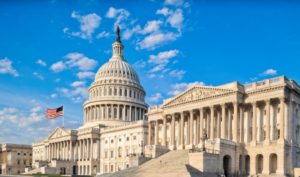
The Trump Administration’s measures to restrict immigration do not square with its push to deregulate.
Do critics of federal agency regulation object to regulation in all contexts? The Trump Administration clearly does not, given its drive to increase immigration regulation despite proclaiming to pursue a deregulatory agenda.
The Trump Administration has not adequately justified its push for less regulation generally while imposing greater regulation on immigration. Opponents of regulation should actually favor deregulation in the context of immigration because their concerns about regulation align with core issues implicated in immigration law.
Opponents of regulation invoke principles of fairness, individual liberty, and separation of powers—but these concerns all arise in the context of immigration as well. Immigrants grapple with exercises of agency power that determine basic life questions. Through immigration regulation, the government dictates where individuals may live and work and whether they may live with their immediate family. Immigration law should be the poster child for decreased regulatory power. But the current deregulatory administration apparently does not share those concerns when it comes to immigration law.
In immigration law, government power is life-disrupting and filled with frustrating exercises of bureaucratic power. Even the selection of legal immigrants presents bureaucratic obstacles and limitations on freedom of movement. Guidance documents—which are not very transparent, even to lawyers—contain many rules applicable to the administration of immigration benefits. Congress commonly sets only broad descriptions of a lawful immigration category and then requires a federal agency to fill in substantial details using guidance documents.
Governmental power over immigration is overwhelming and scary. In a removal (i.e., deportation) hearing, the substantive law applied is harsh and complex and has weak procedural safeguards. The substantive law provides little proportionality; the punishment is almost always removal. Also, the substantive law provides broad categories of activities that render someone removable, but only very narrow categories of relief from removal. Immigration law accepts that separation from immediate family members is a run-of-the-mill consequence for a civil immigration violation.
Agencies apply the substantive law in an administrative adjudication system that provides such dysfunctional process that the process recently received the “John Oliver treatment.” For example, although all immigrants do not have a right to government-funded counsel in immigration court, a U.S. Department of Homeland Security lawyer always represents the government. Immigration judges, who are merely attorney-employees of the U.S. Department of Justice, run the hearings. Immigration judges lack decisional independence due to their subservience to the U.S. Attorney General, the nation’s top law enforcement officer. The system faces an absurd backlog of over 600,000 cases, and immigration judges are not given sufficient time for training. The Attorney General may also assign a removal case to himself at any time and may nullify the work of immigration adjudicators.
Many immigrants are subject to expedited types of removal that do not even provide the process afforded by an immigration court hearing. Immigrants regularly waive rights to an immigration court hearing as part of mass plea bargains obtained in criminal court at the border. Other immigrants are subject to expedited removal, which allows front-line employees of one agency, U.S. Customs and Border Protection, to decide quickly whether to remove an individual subject only to the review of a supervisor within the same agency.
The role of the federal judiciary in immigration law can be minimal. Congress has restricted the ability of the federal judiciary to check agency action in immigration law. Many discretionary agency actions are excluded from court review, and other types of agency actions are restricted to review of only questions of law.
Despite the threats to individual liberty and federal agencies’ exertion of tremendous unchecked control over the lives of immigrants, the Trump Administration appears to exclude immigration from its concerns about regulatory power. President Donald Trump has explained that decreasing regulation is a primary goal of his tenure. The White House General Counsel, Don McGahn, called the regulatory state “the greatest threat to the rule of law in our modern society” and a “direct threat to individual liberty.” But these concerns do not appear to extend to immigration law.
The Trump Administration advocates for a physical border wall while also developing a bureaucratic “invisible wall.” It issued one of the most controversial and restrictive immigration policies of recent times, a travel ban that affects mostly Muslim-majority nations. The Administration has announced plans to require disclosure of five years’ worth of social media information about many applicants for admission. It has taken action to decrease the already weakened decisional independence of immigration judges by evaluating them based on case completion quotas.
Why is immigration law excluded from the project to decrease regulation? Perhaps the fact that immigrants are not citizens could justify accepting regulation over immigrants that would be objectionable in other contexts. This explanation is not satisfying, however. The U.S. Constitution protects all foreign nationals who are within the United States and some who are returning to the United States. For example, the Due Process Clause protects immigrants in removal hearings facing deportability charges. The Constitution is concerned about how the government flexes its muscle in this context. Individual liberty concerns should be just as strong because the Constitution applies. Even if the Constitution did not apply, if individual liberty should be maximized, what difference does it make if the individual happens to be a foreign national? If the concern is about separation of powers, those concerns should exist no matter who is being regulated, as those concerns are at the heart of the legitimacy of government functions.
Maybe the key to the Trump Administration’s approach is that the identity of the regulated party matters when determining how much government power is acceptable. That scenario simply begs the question: Why should immigrants be subject to the most regulation, out of all the categories of regulated parties?
Should immigration be the most heavily regulated because it presents some special danger? Evidence shows the opposite: Immigration poses no special danger, criminal or economic. For national security concerns, immigration acts as more of a benefit than a threat. Moreover, if there were specific security threats from immigration, regulation could be narrowly tailored to those threats in order to meet national security goals.
Focusing on the identity of the regulated party leads to another possibility—that immigrants are denigrated to the point that they are viewed as not worthy of protection. If immigrants are conceived of as somehow less than full persons, either out of genuine prejudice or due to political expediency, governmental power may not be worrisome. But this possible explanation for the Trump Administration’s approach toward regulating immigration is disturbing. An individual’s race, ethnicity, or religion should not dictate the acceptability of the governmental power exercised against that person.
The Trump Administration’s aggressive push to minimize regulatory power contrasts starkly with its aggressive push to increase government regulation of immigrants. We need a better explanation for why regulation is an enemy—except when immigrants are the regulatory target.
This essay is adapted from her forthcoming article Immigration Law Allies and Administrative Law Adversaries.




